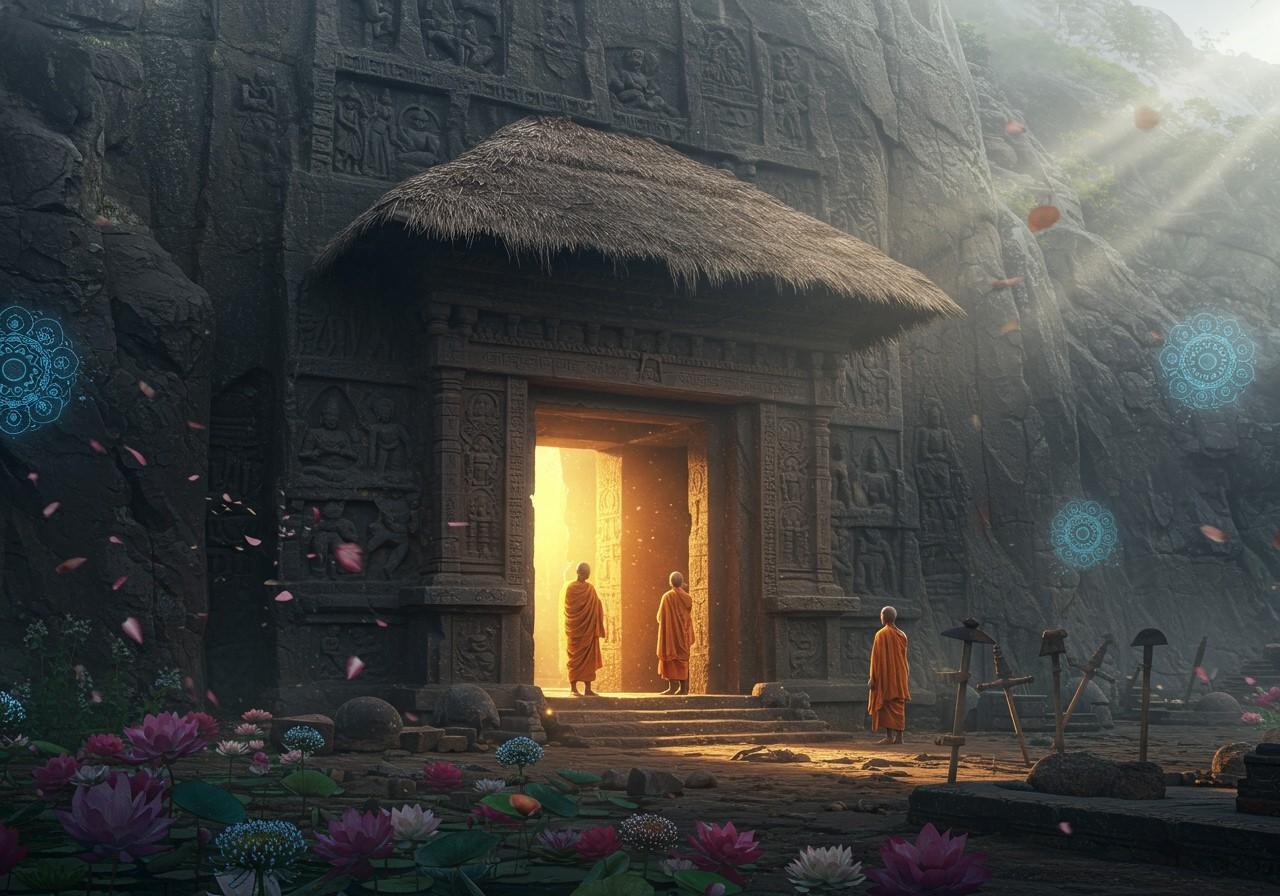
The Lomas Rishi Cave, nestled within the Barabar Hills of Bihar, India, stands as a testament to the country’s rich architectural and spiritual heritage. Dating back to the 3rd century BCE, this rock-cut marvel offers a glimpse into the Mauryan period and the ingenuity of ancient Indian craftsmanship. This blog delves into the cave’s origins, architectural features, historical context, and cultural significance, inviting you on a journey through time.
What Makes the Lomas Rishi Cave Unique?
The Lomas Rishi Cave distinguishes itself among the seven rock-cut caves in the Barabar Hills with its unique architectural style and historical relevance. Its iconic chaitya arch and pre-Buddhist influences set it apart. The cave comprises two chambers: a rectangular hall and a circular chamber with a polished interior. The exterior boasts a carved facade mimicking wooden structures, showcasing the transition from wood to stone architecture in ancient India.
The Patronage of Emperor Ashoka
Commissioned by Emperor Ashoka of the Maurya Dynasty around 250 BCE, the Lomas Rishi Cave was intended for the Ajivika sect, a religious community of that era. Emperor Ashoka’s support extended to various religious groups, demonstrating his commitment to religious tolerance and architectural patronage. Inscriptions within the cave offer valuable insights into Ashoka’s role in these developments.
Architectural Marvels of Lomas Rishi
The architecture of the Lomas Rishi Cave showcases the skill of ancient Indian artisans. The chaitya arch at the entrance represents an early form of rock-cut architecture. The interior surfaces are polished to a mirror-like finish, a technique known as Mauryan polish. The facade’s intricate carvings depict wooden motifs, suggesting the influence of earlier wooden structures. The layout, featuring an acoustically resonant circular chamber, likely served meditative practices and gatherings.
A Glimpse into History
As part of the Barabar Caves complex, the oldest surviving rock-cut caves in India, the Lomas Rishi Cave holds immense historical significance. Dating back to Emperor Ashoka’s reign, it provides insights into the socio-religious dynamics of the time. Dedicated to the Ajivika sect, which practiced asceticism, the cave reflects the religious diversity and tolerance of the Mauryan period. The Barabar Caves, including the Lomas Rishi Cave, stand as some of the oldest surviving rock-cut caves in India, carved from granite and monolithic rock. These caves represent early examples of rock-cut architecture in India, dating back to the Mauryan period.
Cultural and Religious Significance
The Lomas Rishi Cave represents early architectural experimentation, paving the way for later Buddhist rock-cut architecture. Its dedication to the Ajivikas underscores the diversity of spiritual practices in ancient India. The site symbolizes the transition from wooden to stone architecture and preserves ancient construction techniques and aesthetic preferences.
Preservation and Tourism
Preserving the Lomas Rishi Cave is crucial for safeguarding its historical and cultural legacy. The Archaeological Survey of India (ASI) oversees its conservation. Challenges include environmental factors and human-induced damage. The site attracts tourists, scholars, and history enthusiasts, contributing to the local economy. Responsible tourism and educational initiatives are essential for raising awareness about the cave’s importance.
Connect with Ancient Heritage through Poojn.in
Poojn.in empowers you to connect with India’s rich spiritual heritage. Inspired by sites like the Lomas Rishi Cave, we offer authentic puja items and ritual supplies. Our collection includes:
- Pure copper and brass meditation bowls: These bowls create resonant sounds for enhancing meditation practices, connecting you with the ancient traditions of sound healing.
- Traditional meditation cushions and mats: Provide comfort and support during meditation, allowing for deeper focus and connection with your inner self.
- Natural incense and dhoop: Create a sacred atmosphere with these aromatic offerings, enhancing your spiritual practices and creating a serene environment.
- Pure cotton meditation shawls and stoles: Wrap yourself in comfort and tradition with these shawls, perfect for meditation or spiritual gatherings.
- Brass and silver oil lamps (diyas): Illuminate your sacred space with these beautifully crafted diyas, adding a traditional touch to your rituals. Find Diyas and more on Poojn.in.
Visit Poojn.in to explore our full range of products. We offer detailed descriptions in Hindi and English, along with usage guidelines. Benefit from free shipping across India on orders over ₹500.
Conclusion
The Lomas Rishi Cave stands as a remarkable testament to India’s ancient past. Its unique architecture, historical context, and cultural significance offer a captivating journey through time. As we continue to preserve and study this ancient marvel, it serves as a source of inspiration and pride, connecting us to our heritage. Whether you are a history enthusiast, a spiritual seeker, or a curious traveler, the Lomas Rishi Cave invites you to witness the grandeur of India’s ancient craftsmanship and spiritual legacy.


